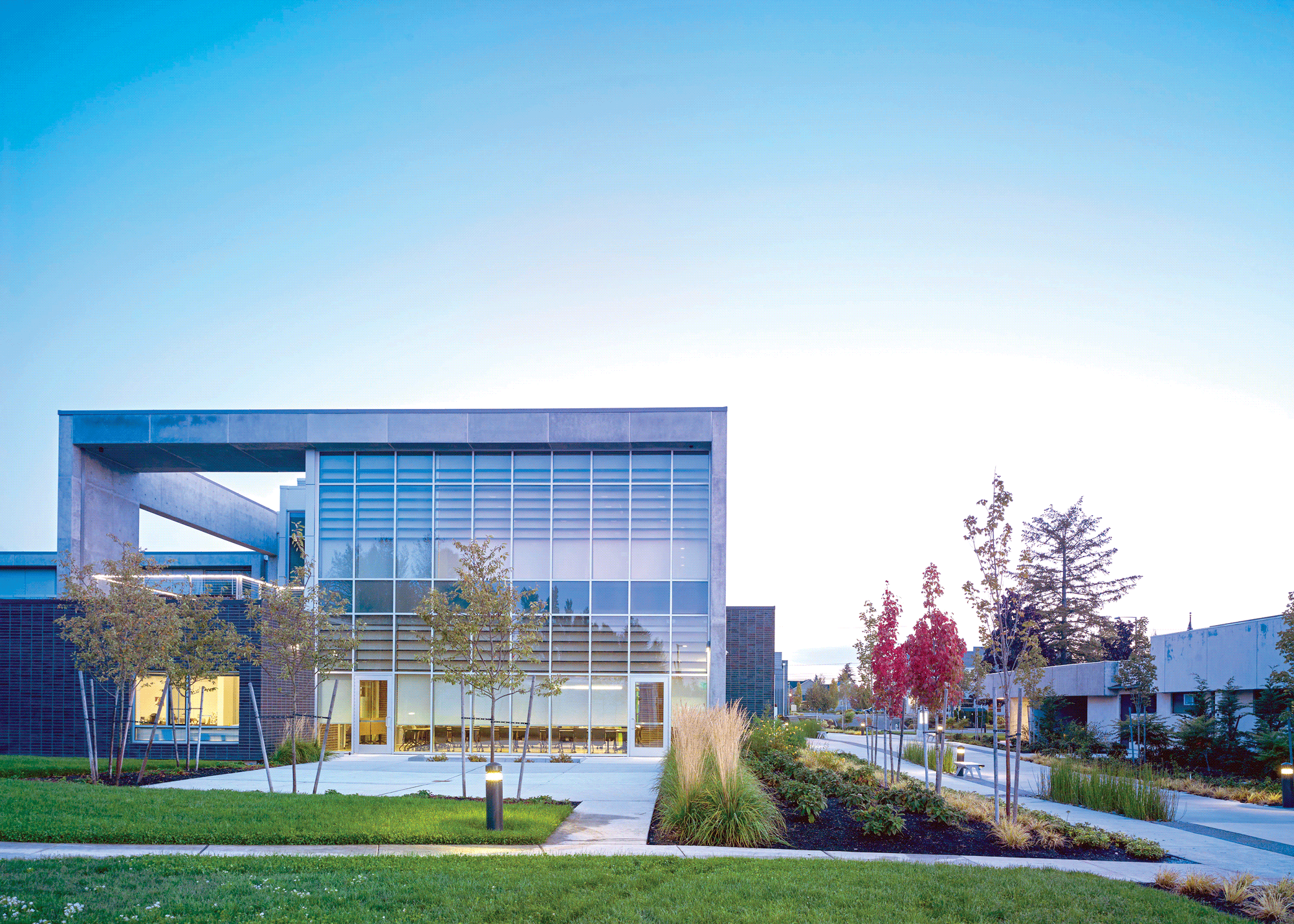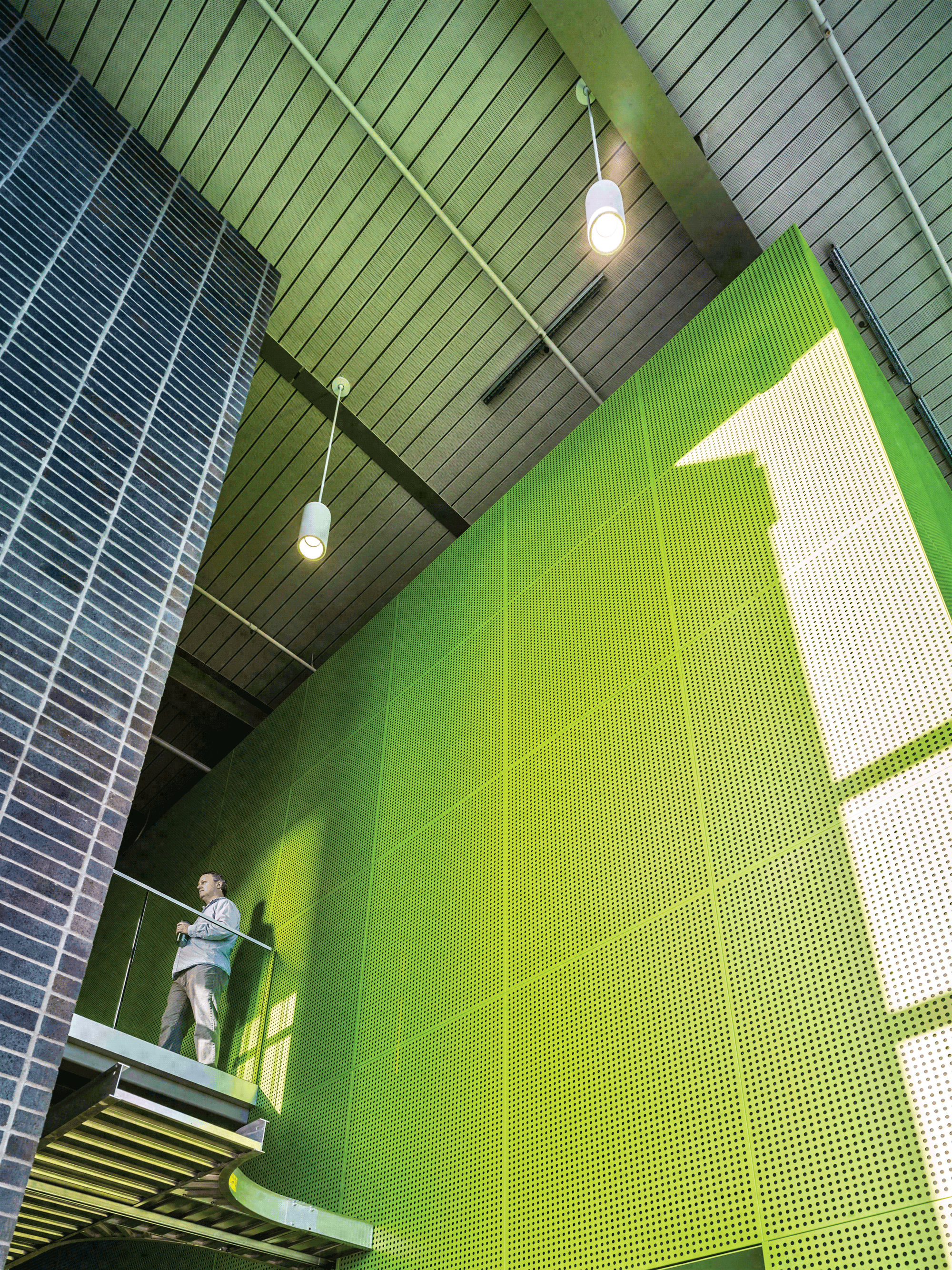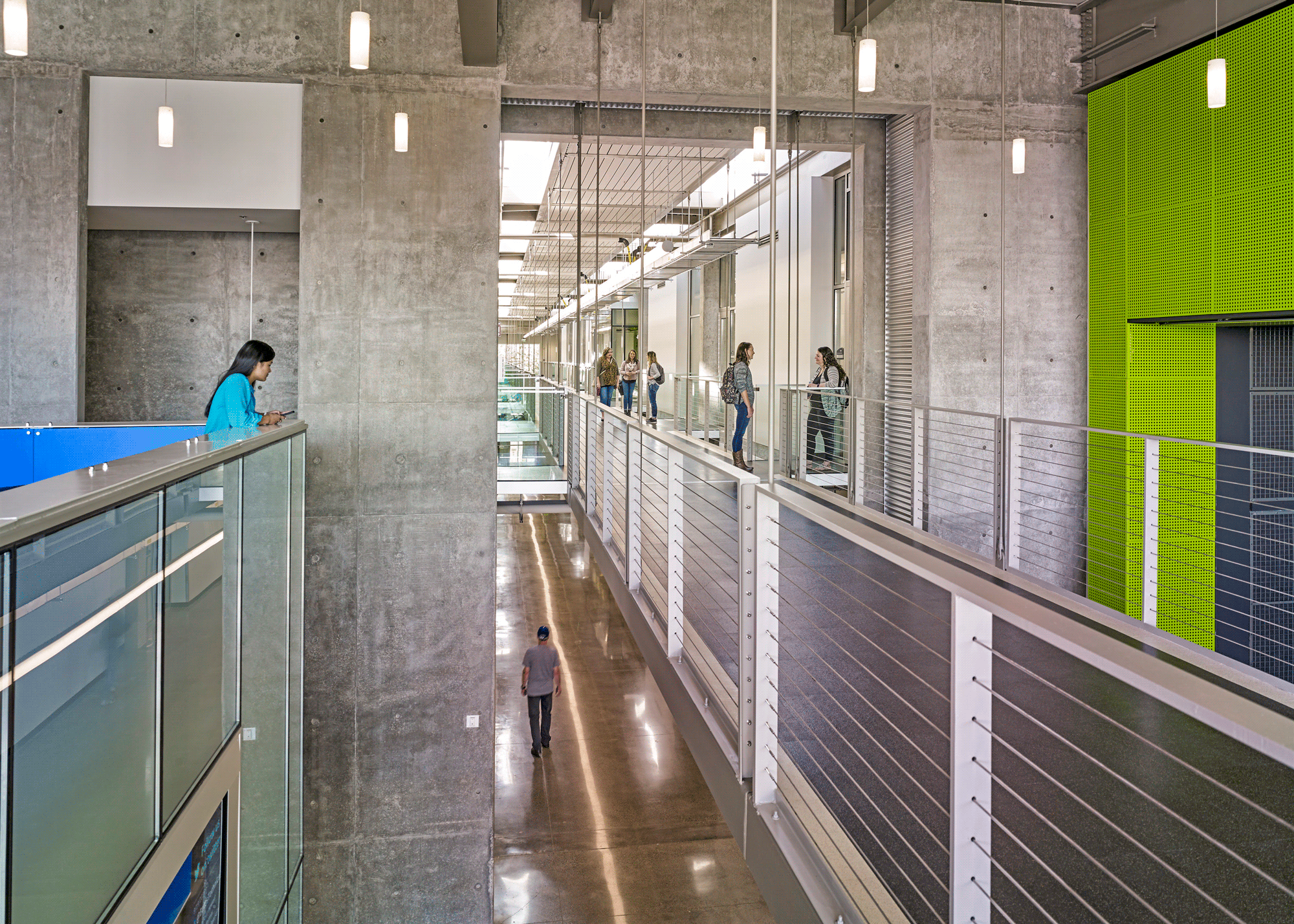
The building links to existing facilities with a new entry courtyard and a cohesive material palette. Colors are used to identify key building features like the green broadcast studio. [Photo: Francis Zera]
Visitors to the greater Seattle area, awed by the scope of the city’s growth, can sometimes forget the high-tech office spaces and garden rooftops of new apartment buildings aren’t accessible to everyone.
As Seattle hurtles full speed into new economies and a building frenzy led by green design, communities with little proximity to the Microsofts and Amazons of the world are increasingly left behind. But down the road in nearby Tacoma, a community college is paving the way for equal access with an award-winning technology center.
Bates Technical College has three campuses around Tacoma. One, until recently, contained little more than the local news channel’s broadcast station, a parking lot, and some satellite dishes. “That campus straddles the Central Tacoma and Hilltop neighborhoods, which have struggled historically with economic and gang-related challenges,” explains Matt Lane of Tacoma’s McGranahan Architects. “The college wanted to address those issues and serve traditionally underserved populations in the area—to not only have a community hub, but to encourage STEM education.” But for students to even want to attend classes there, the college needed a facility that would be flexible, dynamic, and exciting. That’s where Lane and his project team came in. Their design for the Bates College Advanced Technology Center recently received honorable mention by AIA Seattle’s Honor Awards.

Ground level and rooftop outdoor spaces encourage outdoor learning and social gathering. [Photo: Francis Zera]
“You walk into the building and you can see the technology on display,” Lane says. “We exposed a lot of the systems in the building, even the server rooms, which are usually put into closets. You see how students are working in programs and how the building itself works. The college calls it ‘pulling back the technological curtain.’ When they bring young people into the building they get really excited.”
The building is structured around the existing brutalist structure of the broadcast studio, which continues to have an integral partnership with the school through a broadcast lab. But inside, systems are flexible enough to fit with the ever-changing needs of a community college whose offerings must change with the needs of its students and the local markets. The school de-demarcates the boundaries of academia, allowing more interaction between students, teachers, and staff. Floor plans offer customizable event spaces used by both the college and the surrounding community. Swaths of natural light pour in from the concrete and glass facades, which offer sweeping views of Mount Rainier, a natural inspiration if ever there was one.

[Photo: Francis Zera]
“The U Tube Cube is the first thing you see when you walk in,” Lane says of an entry wrap and presentation space. “It has a lot of different screens throughout, so the digital media projects the students are working on can be displayed.” There, a sustainability kiosk also shows the energy use of the building:
A green roof, which acts as a faculty lounge space, captures rainwater runoff, while a ground source heat exchanger and heat recovery from the server tower offer massive energy savings. McGranahan estimates a 35% reduction in energy use, a savings of nearly $25,000. Thanks to irrigation and domestic water use reduction features, hundreds of gallons of water are saved each year. While the building is LEED Gold–certified, Lane says that’s not what’s most special about the building. “It’s not like the energy savings or sustainability features are front and center. They’re integral to the building and they’re definitely helping its energy performance, but they’re integral to the design. They’re not super expressive,” he explains. “The building is more about being a community hub and fostering community connections.”
One year after opening, Campus Dean Josh Clearman says enrollment has increased by more than 30%, thanks in part to the center’s design. Open floor plans with peaceful corridors and spaces like a transparent student lounge nurture co-learning, inclusivity, and technology. “A key component to student persistence in education is a sense of community, and this building design fosters that sense of community,”
he says.
ADVANCED TECHNOLOGY CENTER
- LOCATION: Tacoma
- SIZE: 51,629 square feet
- COMPLETION: December 2015
- ARCHITECT: McGranahan Architects
- COST: $19,513,380 (publicly funded)

[Photo: Francis Zera]
